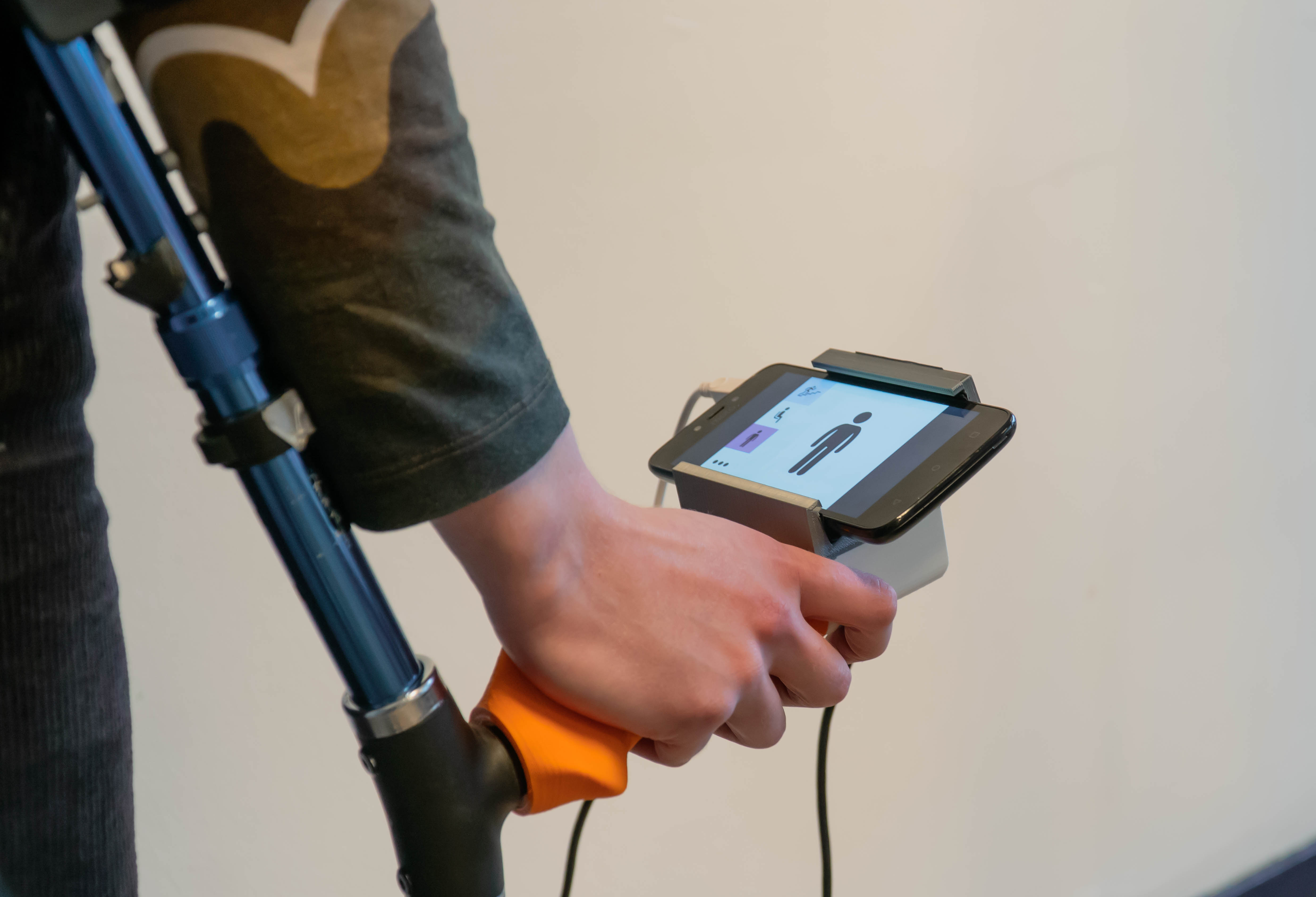4.3.1 The Project MARCH input device
Course subject(s)
Module 4. Making the Exoskeleton Smart
At Project MARCH we have chosen one specific input method and have continuously improved this method over the years. Curious about the design process of this input device? Watch below for all the ins-and-outs.
The input device
Over the years, the input device has changed in several ways. The screen as you can see in the video will be replaced by a smartphone. This way, the pilot can easily select gaits via an application on the phone. The scroll wheel to select the gaits will be moved to the bottom of the handle to make it more ergonomic. Furthermore, it would be desired to make the input device wireless, this will lead to a more user-friendliness experience. This communication could for example be done via Wi-Fi instead of cables.

The first steps towards a brain-controlled exoskeleton will be made soon. With help of Electroencephalography (EEG), the pilot can control the exoskeleton by only thinking of the movements. When the pilot thinks of walking, the exoskeleton will execute the movement. Currently, a lot of research is conducted on how to implement EEG. As it is not feasible to implement it fully in one year, the input device on the crutch is still the “main” input device.

Project MARCH: behind the technology of robotic exoskeletons by TU Delft OpenCourseWare is licensed under a Creative Commons Attribution-NonCommercial-ShareAlike 4.0 International License.
Based on a work at https://online-learning.tudelft.nl/courses/project-march-behind-the-technology-of-robotic-exoskeletons/



